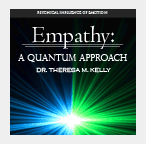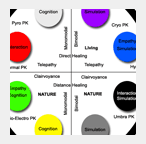Empathy
Parapsychology Articles, Papers and Books
Home > Articles > Psychical Phenomena > Extrasensory Perception > Empathy
![]()
|
| NEWSLETTERS |
| Get the best from QPsychics.com in your inbox! |
|
| PARAPSYCHOLOGY ORGANIZATIONS |
"With confidence in the importance of utilizing the investigative mode of the established sciences in order to inquire into the authenticity and to potentially explain the nature of psychical phenomena."  |
 |
 |
 |
 |
Stages of Empathic Interaction
Empathy is the psychical influence of emotion via experient influence over the emotional basis of consciousness and the mental and physiological processes associated with a wide variety of emotional experiences. In regards to intentional empathic interaction techniques, several stages are assumed to exist through which the empathist impresses emotional experiences. During spontaneous (non-intentional) empathic interaction, these processes are assumed to run automatically by the subconscious. However, since the processes are run subconsciously, there is no conscious directive. To obtain a level of conscious direction, the empathist is assumed to require achieving each step in order to perform successfully. Stage 1 of the empathic impression process involves initiation, i.e. the empathist recognizes his or her need to impress emotional information consciously, and therefore subconsciously. Stage 2 involves selection, i.e. the empathist begins to decide what emotional experience will be impressed, and whom the subject or subjects will be. The empathist will need to induce the emotional information transfer process at this time. Techniques vary per the limitation of the empathist. Stage 3 involves induction, i.e. the empathist induces the subject into a hypnotic state. This step is not considered a requirement for non-hypnotic empathic interaction (i.e. purely suggestive emotional impression).
Stage 4 involves suggestion, i.e. the empathist directs the focus of a dominate emotion or relative idea or call to action by shifting subject “focus” on an emotion or relative idea or call to action to a “command” to accept the emotional experience. Selection techniques include, but are not limited to; eye to eye contact, touch, spatial proximity, and the use of an electronic medium (e.g. phone or computer; real-time programs such as chat or internet phone).
(Adapted from the book “Empathy: A Quantum Approach - The Psychical Influence of Emotion” by Theresa M. Kelly, MsD.)
|
|||
Related Articles |
|||

